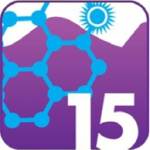The Global ecosystem restoration index (GERI) is a composite index that integrates structural and functional aspects of the ecosystem restoration process. These elements are evaluated through a window that looks into a baseline for degraded ecosystems with the objective to assess restoration improvements or declines in a more integrated manner.
| EBV class Species Populations Species distribution, Population abundance |
EBV class Ecosystem Structure Ecosystem extent and fragmentation |
Purpose
There is still a lack of global indicators to assess Target 15 of the Convention on Biological Diversity. One of the main problems rests in the actual definition of restoration. Many ecosystem changes may lead to restoration of ecosystem functioning; however, not all these changes are caused by the same process. Land restoration is a composite term that describes different processes acting at different times, scales, and extents. We build upon recent advances on biodiversity science, remote sensing, and ecosystem mapping to design a composite index tailored to three key and complementary elements of ecosystem restoration: (1) change in ecosystem productivity (2) change in the ecosystem energy balance and (3) changes in land cover. Degraded areas defined in a baseline are the window into the world upon which we monitor these three aspects relative to the goals of Target 15.
 |
CBD Aichi Target 15 Restoration of 15 percent of degraded ecosystems |
Coverage
This composite index is produced for near the entire terrestrial surface of the planet at a spatial resolution of 1 km². This allows for the GERI index to be aggregated to small regions, states, countries, continents and the planet. This index uses well-vetted products derived from MODIS sensor, in orbit since 2001. These products are continuously being outputted and the expected data availability and planned mission continuity is an assurance of the temporal sustainability of the proposed index.
Methods
The Global Ecosystem Restoration Index (GERI) addresses Target 15 goals by integrating three datasets derived from remote sensing and produced at global extent. These datasets were carefully selected because they address three different but related aspects of the land restoration process. The first functional aspect is based on changes in land productivity, the second aspect is also functional and it is related to changes in the energy balance of the ecosystem, the third and final aspect is related to the structural changes and it is measured using identity transitions in land cover. These datasets are evaluated together though a window (i.e., mask) defined by a baseline of land degradation that aims to capture and discriminate very highly degraded ecosystems from degraded ecosystems.

 Global Ecosystem Restoration Index
Global Ecosystem Restoration Index